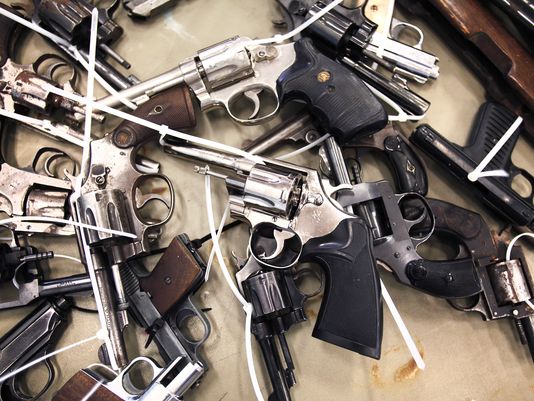Six percent of 7,391 hospitalizations for firearm-related injuries to children and teens in 2009 proved fatal. Most of the hospitalizations resulted from assaults; the fewest from suicide attempts.

(Photo: Bill Pugliano, Getty Images)
Almost one child or teen an hour is injured by a firearm seriously enough to require hospitalization, a new analysis finds. Six percent of the 7,391 hospitalizations analyzed resulted in a death, says the study in February’s Pediatrics, released today.
The damage caused by gun-related injuries rarely gets the same attention as fatalities, but that every day, 20 of our children are hospitalized for firearms injury, often suffering severe and costly injuries, clearly shows that this is a national public health problem, says Robert Sege, director of the Division of Family and Child Advocacy at Boston Medical Center and a co-author of the study.
Despite declining rates over the past decade, firearm injuries remain the second leading cause of death, behind motor vehicle crashes, for teens ages 15 to 19, according to the Centers for Disease Control and Prevention.
Children who survive firearm injuries often require extensive follow-up treatment, including rehabilitation, home health care, hospital readmission from delayed effects of the injury, and mental health or social services, Sege says.
Although a number of studies have used vital statistics data to examine pediatric fatalities related to firearms, this is the first to highlight the burden of non-fatal injuries using hospitalization data, he says.
Researchers analyzed a nationally representative sample of discharge data collected on children and adolescents (up to age 20) in 2009. The data, released in 2011, are the most recent available, Sege says.
In addition to 453 of the 7,391 hospitalizations that year resulting from firearm-related injuries, other findings show:
•The most common types of firearm injuries included open wounds (52%), fractures (50%) and internal injuries of the thorax, abdomen or pelvis (34%).
•In children under age 10, 75% of hospitalizations were due to unintentional injuries.
•Rates were highest for those ages 15 to 19 (27.94 per 100,000.)
•Of all hospitalizations, 89% were males; the hospitalization rate for males was 15.22 per 100,000, compared with 1.93 per 100,000 for females. The hospitalization rate for black males was 44.77 per 100,000, more than 10 times that for white males.
The study detailed a significant racial gap: Black children and adolescents comprised 47% of all hospitalizations, 54% of hospitalizations resulting from assaults, 36% from unintentional injuries and 54% from undetermined causes.
Noting the significantly higher poverty rate for young black males compared with young white males, Sege says the data did not allow researchers to separate the effects of poverty from the effects of race.
Nor did the data indicate what types of guns were used or where the injury occurred. The findings emphasize the need for funding for public health research to find the best way to reduce children’s access to firearms, he says.
In the absence of such research, Sege says, the best advice is to follow the American Academy of Pediatrics’ recommendation that the safest home for children and teens is one without guns, and if there are guns in the home, they should be stored unloaded and locked, with the ammunition locked away in a separate place.





